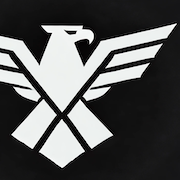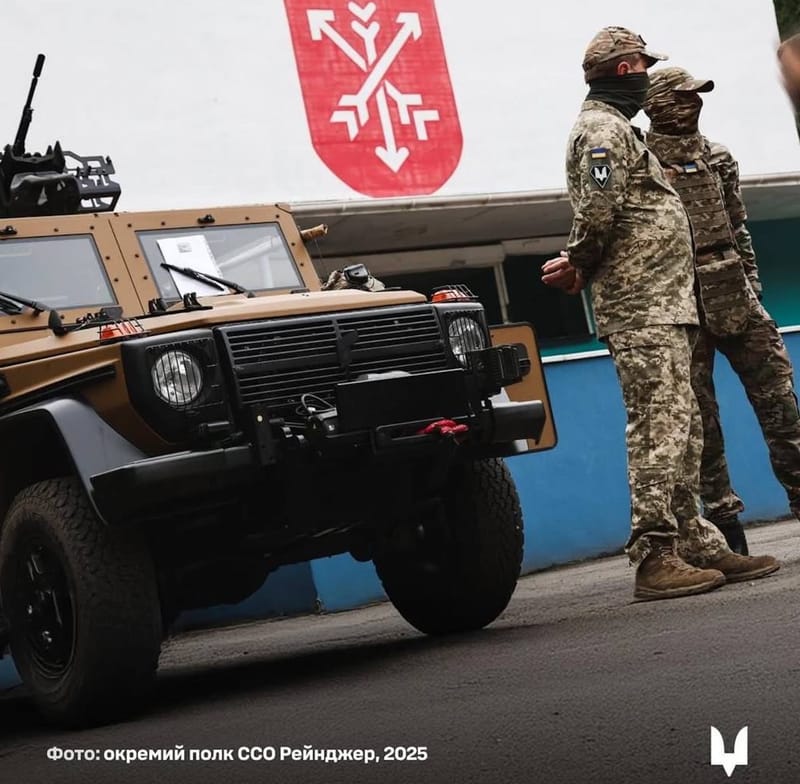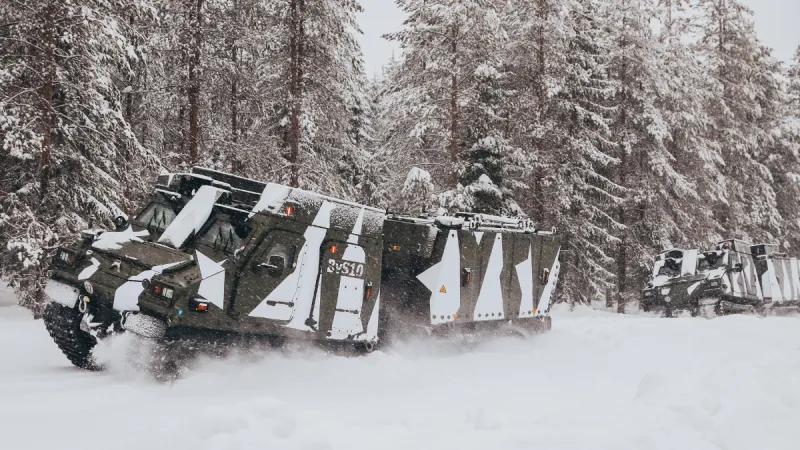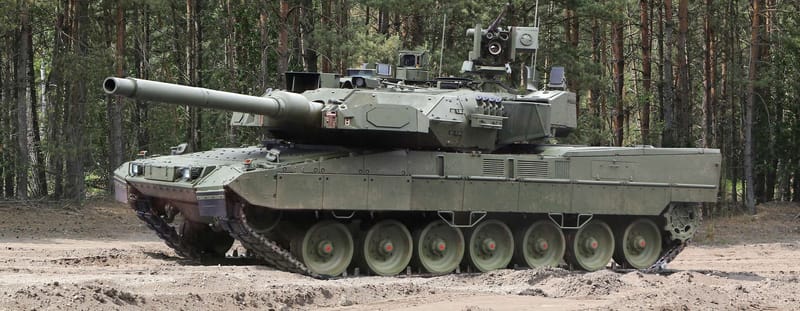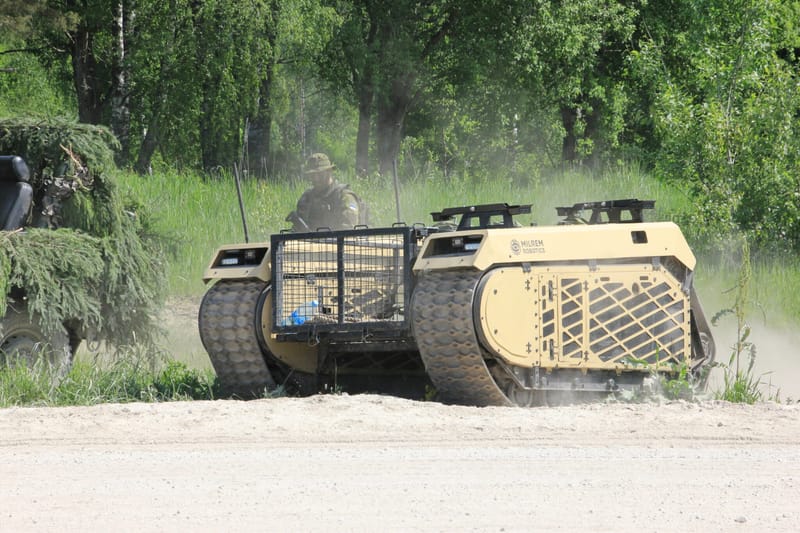Return of Mass: Rethinking Armor in the Age of Precision Fire
Armored warfare is undergoing a doctrinal shift as precision fires, loitering munitions, and ubiquitous ISR challenge traditional survivability. This article explores how dispersion, EMCON, and mobile SHORAD are altering the role and design of armored forces.

Armored warfare faces a foundational recalibration. Once the centerpiece of ground maneuver, heavy armor now contends with a battlefield saturated by precision fires, loitering munitions, and networked ISR. The strategic environment has not obviated the need for armor but is forcing a renaissance in how it is employed, supported, and protected.
This article examines the operational and technological adjustments underway as militaries adapt armor doctrine to survive and prevail under the gaze of ubiquitous sensors and precision strike systems.
Precision Lethality and the Dispersed Battlespace
Contemporary strike regimes—enabled by drones, long-range fires, and real-time targeting—have compressed the sensor-to-shooter chain and amplified the lethality of previously survivable systems. Tanks and IFVs are now visible and vulnerable in ways that invalidate Cold War-era survivability assumptions. The answer is not abandonment but transformation.
Massed formations now invite saturation fires. As a result, dispersion, deception, and mobility have become central to armored survivability. In Ukraine, Russian armored columns have repeatedly been neutralized by UAV-coordinated artillery, where quadcopters or fixed-wing drones fix targets and relay positions to indirect fire systems within minutes.
Units must operate in a distributed posture, reconnecting through latency-tolerant C2 systems such as mesh networks, pre-authorized maneuver protocols, and autonomous kill chain execution frameworks. This implies decentralization down to company or even platoon level, with autonomous command-and-control loops, embedded ISR, and manned-unmanned teaming—for example, IFVs coordinating with UGV scouts or loitering munitions.
The goal is not dispersion for its own sake, but cohesion without exposing high-value platforms to persistent ISR.
While dispersion dominates in open terrain and peer conflicts, some dense urban or terrain-constrained theaters may still reward shock massing —when shielded by obscurants, mobile IADS, and tight C2 integration. In such contexts, temporary concentration—if well-coordinated and shielded—can still achieve localized overmatch.
Survivability Beyond Passive Protection
Passive armor is no longer a primary survival guarantee. Active protection systems (APS) are now table stakes for frontline armor, yet even these cannot keep pace with saturation drone threats and multi-axis attacks. Survivability must be reimagined as a function of sensor discipline, thermal signature management, and electromagnetic spectrum control.
Camouflage has returned in digital form: signature reduction measures, multispectral obscurants, and terrain-integrated camouflage nets are standard counter-ISR techniques. Moreover, armor units must employ adaptive emission control (EMCON) and regularly relocate to deny adversary targeting cycles.
In Ukraine, the drone threat has driven both improvised and doctrinal shifts. Leopard 2 tanks, vulnerable to FPV strikes on rear armor and optics, now operate with ad hoc anti-drone cages and increasingly under SHORAD cover—such as Gepards and other mobile systems. Though pairing remains inconsistent, this trend echoes Israeli Merkava doctrine, in which tanks operate within layered protection networks of APS, integrated radar, and mobile counter-UAS systems.
Survivability is now a discipline of deception and denial—not just deflection.
Armor as Enabler in Combined Arms Rebalancing
In modern land warfare, armor’s role is shifting from spearhead to enabler. Rather than breakthrough instruments, tanks are increasingly firepower and protection nodes in combined arms teams designed for distributed operations. This includes supporting dismounted infantry against drone swarms, holding contested terrain under fire, or enabling mechanized recovery of forward elements.
This evolution favors light and medium platforms with scalable protection over logistics-heavy legacy MBTs. The U.S. M10 Booker initially embodied this shift, offering light armor optimized for expeditionary deployment, though its cancellation in 2025 underscored the challenges of aligning design with operational doctrine.
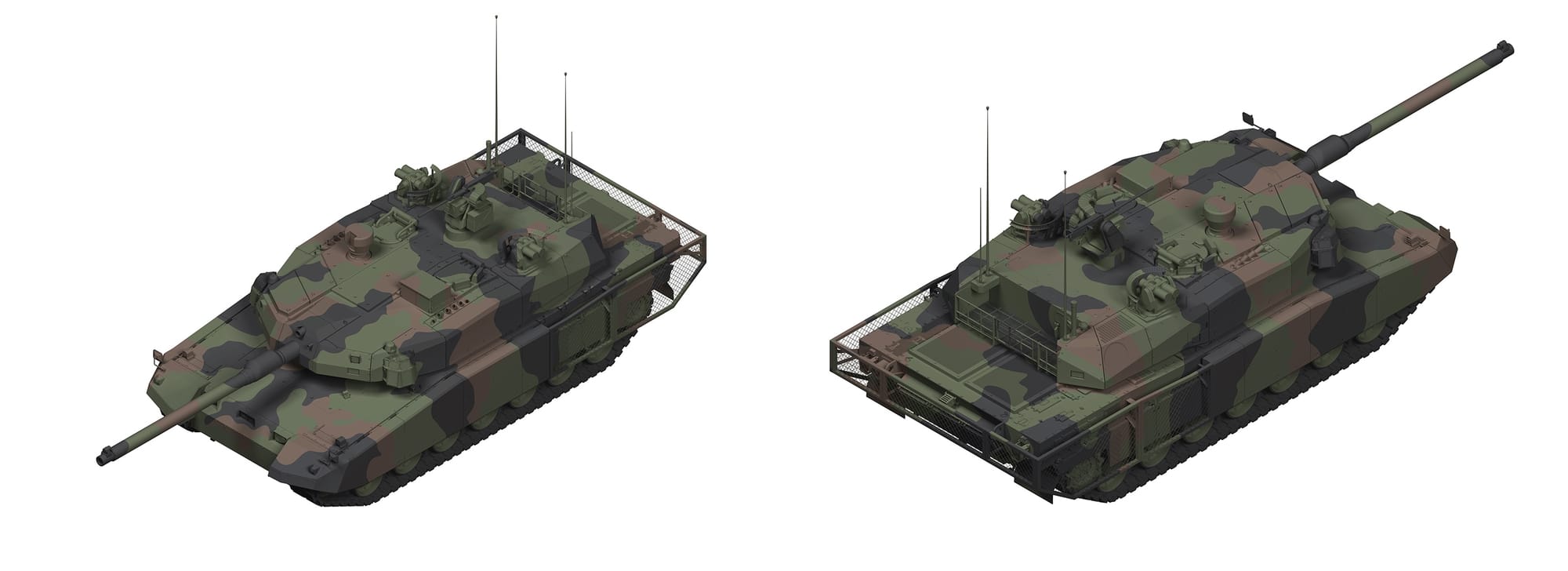
Meanwhile, Poland’s acquisition of the K2 Black Panther reflects a hybrid approach: modernizing conventional MBT capabilities while integrating APS and counter-UAS features aligned with emerging layered defense constructs. The emphasis is increasingly on maneuverability and operational tempo—not mass for mass’s sake.
The Mobile Air Defense Renaissance
Armor's future depends on what protects it. The proliferation of loitering munitions and autonomous strike drones has triggered a renaissance in mobile short-range air defense (SHORAD). No armored force can survive without embedded counter-UAS, radar jamming, and rapid-response interceptors at echelon. SHORAD systems are evolving into maneuver-capable IAMD nodes—dissolving the former division between theater and tactical air defense.
Modern SHORAD is increasingly layered and modular, combining kinetic interceptors, directed energy systems, and EW jammers. Crucially, these systems must move with armor, not trail behind. The survivability of armored units now begins with how well they can degrade and disrupt the enemy’s targeting kill chain—not just how thick their armor is.
Examples of SHORAD Systems Supporting Armor Formations
- Skynex – Modular SHORAD system with 35mm revolver cannons, networked radar, and programmable airburst munitions.
- Iron Dome (Mobile Variant) – Adapted for maneuver units; intercepts drones, rockets, and low-flying missiles in dynamic environments.
- Flakpanzer Gepard – Self-propelled twin-35mm cannon system with radar targeting; reactivated in Ukraine for counter-UAS roles.
- Directed-Energy Platforms (Prototype) – Rheinmetall’s truck-mounted laser weapons under evaluation for mobile drone defense.
- Tactical EW Vehicles – Electronic warfare trucks equipped for RF jamming of UAV C2 links and GNSS disruption in contested zones.
Implications for Force Design and Procurement
The return of mass is not about restoring Cold War force densities but restoring relevance through adaptation. Armor still matters—but only if it is survivable, mobile, and digitally integrated. Procurement cycles must prioritize modular upgrades, APS integration, and C2 interoperability over sheer platform weight.
Force designers must accept that armor will be persistently targetable—and design formations that survive despite this. This shifts value from platform-centric metrics to force-level effects: tempo, cross-domain survivability, and kill-chain disruption. Armor, rethought, remains indispensable—but only if it evolves.
While this analysis primarily references NATO force design, the principles of distributed survivability, digital integration, and mobile air defense are equally relevant to adversaries. Russian forces are now experimenting with embedded EW and counter-UAS vehicles in battalion tactical groups (Bulgarian Military, May 2025; ISW, May 2025), and Chinese doctrine emphasizes integrated joint fires and mobile layered defense for armor in peer conflicts (Defense One, Dec 2024).
The armored paradigm is not obsolete—but undergoing global revision. Survivability is no longer purchased in armor thickness but earned through operational integration, emission control, and maneuver discipline.
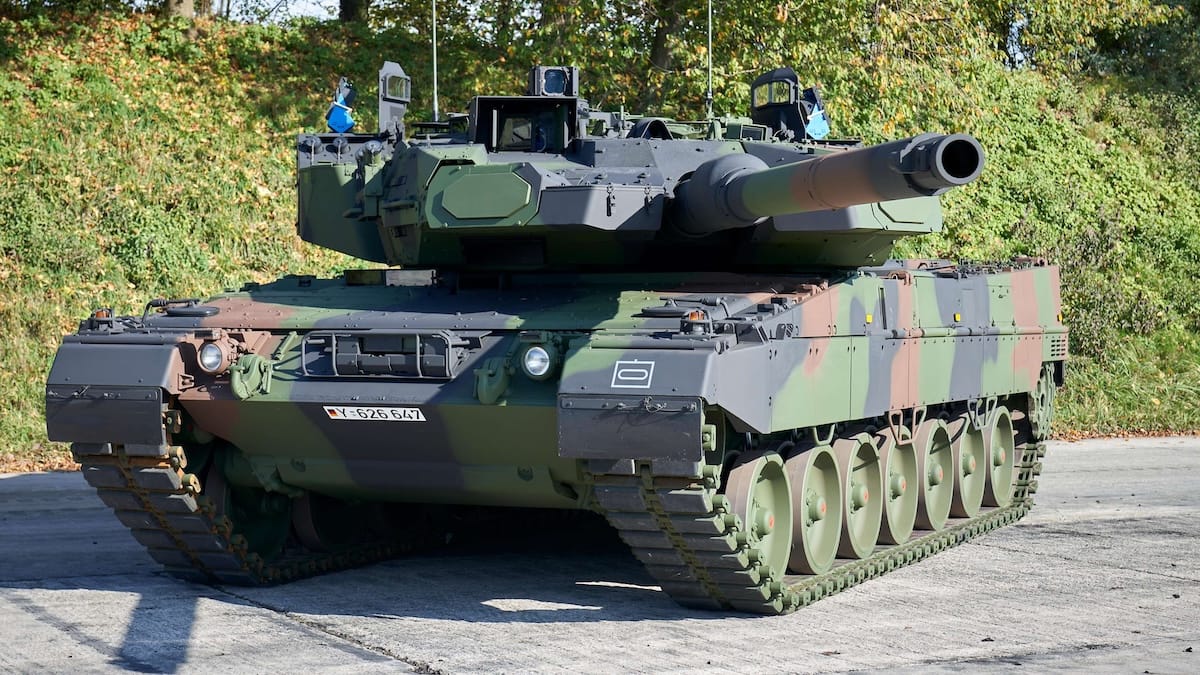

Technical Appendix: Terms & Systems Referenced
Key Terminologies
- Distributed Operations
A tactical approach emphasizing decentralized maneuver and mission autonomy at lower echelons (company/platoon level) to enhance survivability under persistent ISR and strike threat. - EMCON (Emission Control)
A practice of limiting or masking electromagnetic emissions (e.g., radio, radar, GPS signals) to reduce detectability and targeting vulnerability. - Loitering Munitions
Drones or guided weapons capable of patrolling an area before engaging a target—blurring the line between UAV and missile. Example: Lancet, Switchblade. - Active Protection System (APS)
A defensive system mounted on armored vehicles designed to detect and intercept incoming projectiles (e.g., RPGs, ATGMs) before impact. Example: Trophy, Iron Fist. - Manned-Unmanned Teaming (MUM-T)
Operational coordination between manned vehicles (e.g., tanks or IFVs) and unmanned platforms (e.g., UGVs, UAVs) for reconnaissance, targeting, and threat engagement. - Kill Chain Disruption
Interventions at any stage of the sensor-to-shooter loop—through jamming, deception, or mobility—that prevent the enemy from completing a successful strike sequence. - Signature Management
Techniques used to reduce the visibility of military assets across visual, thermal, acoustic, and electromagnetic spectrums to delay or avoid detection. - Counter-UAS (C-UAS)
Tactics, technologies, and systems designed to detect, track, and neutralize hostile drones, often layered through kinetic, EW, and laser-based responses. - Combat Teaming
Modular combinations of different asset types (e.g., armor, infantry, air defense, EW units) designed to operate as self-sufficient combat nodes within a dispersed battlespace.
Named Systems & Programs
- Skynex
A modular short-range air defense system by Rheinmetall using 35mm revolver cannons and programmable airburst munitions. Designed for high-mobility and drone saturation scenarios. - Gepard
A German-origin self-propelled anti-aircraft gun system equipped with twin 35mm cannons and radar, effective against low-flying aircraft and drones. Widely deployed in Ukraine. - Iron Dome (Mobile Configuration)
Israel’s well-known C-RAM system adapted for maneuver support, offering mobile coverage against rocket and drone threats in forward areas. - K2 Black Panther
A South Korean main battle tank featuring advanced fire control, composite armor, and optional APS integration. Increasingly adopted in Europe for modern armored formations. - M10 Booker
A now-cancelled U.S. light tank concept emphasizing strategic mobility and digital integration for infantry support and expeditionary roles. - Trophy APS
An Israeli-developed active protection system using radar and hard-kill interceptors to defeat anti-tank missiles and RPGs. Deployed on Merkava tanks and some NATO MBTs. - EW Trucks (e.g., Borisoglebsk-2, HEP 70)
Mobile electronic warfare vehicles used to jam drone communications, GPS signals, or enemy C2 links—part of emerging doctrine to shield armored units from UAV targeting. - Multispectral Camouflage Nets (MSCNs)
Camouflage systems designed to conceal vehicles and equipment from detection across visible, infrared, and radar wavelengths.


